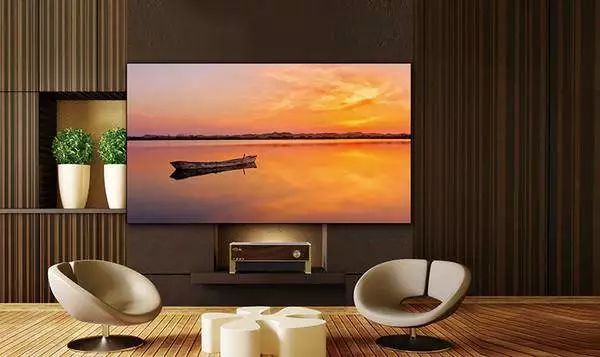The difference between LED screen and OLED screen is not only one letter, but also the imaging technology. After reading this article, I believe you will have a comprehensive understanding of OLED technology.
LED screen and OLED screen are essentially different in luminous principle.
The full name of LED is led. Like traditional semiconductor industry, LED display is a display mode controlled by semiconductor LED. It usually has many red LED, which is led by the simultaneous interpreting of the lamp, so as to realize the display screen of various information such as text, graphics, image, animation, video, video signal and so on. The process cost is high. In addition, LED can only be applied in the form of point light source.
OLEDs emit light by driving the organic film itself with current. OLED is an inborn surface light source technology. The light emitted can be red, green, blue, white and other monochromatic, and then achieve full-color effect. It belongs to a new luminous principle. The reason why the image quality of plasma technology, OLED technology and even the early CRT technology is praised is that they all have the characteristic of “self luminous”.
Most of the questions about led and OLED screens come from the differences between LED TV and OLED TV. LED TV refers to the LCD TV with LED as backlight. LED screen relies on the deflection of the liquid crystal molecules to control the light transmitted by the backlight to display the image, which has inherent defects in color performance, contrast, response speed and visual angle.
Contrast OLED screen can achieve infinity
From the contrast point of view, the LED screen can’t be controlled for each pixel. When it displays black, it mainly depends on the deflection of the liquid crystal molecules to shield the backlight. Therefore, when the liquid crystal panel displays black, there will be some light leakage, so it can’t get the ultimate black field. OLED technology can turn off independent pixels and make their brightness return to zero. Theoretically, the contrast of OLED technology can be infinite. In the actual display effect, the video content based on dark scenes is the biggest challenge for LED, while OLED can easily cope with it.
The light leakage of LED TV cannot be avoided
It is impossible for OLED to leak light in black field, so as to improve the contrast and image quality. Therefore, for those who pursue the ultimate experience and sense of substitution, only OLED TV can meet their needs at present.
The screen structure of OLED can be as thin as paper and can be bent and folded at will. Compared with the LED screen with complex structure, OLED display technology does not need the support of backlight, so the LCD and backlight module are omitted. The structure is very simple, and the fuselage can naturally reach ultra-thin, which can be about 1 / 3 of the thickness of traditional LED screen. In the future, OLED TV is expected to achieve a thickness of less than 1 mm, which is beyond LED’s reach.
OLED also has the characteristics of flexibility and flexibility. It can not only be used in TV, but also make intelligent devices full of imagination in the future. Combined with the thin characteristics of OLED, the screen can be made as thin as a piece of paper and can be bent and folded at will, which is unimaginable in the LED era. At present, LG display, which has always been committed to OLED, has already demonstrated a curly OLED screen last year. Let us see that OLED does not stop at the concept of “thin”. It can be called another revolution in the form of display products.
Response speed LED screen working mode doomed to the shadow can not be eradicated
The response time of the screen usually refers to the response speed of each pixel of the TV to the input signal, that is, the time required for the pixel to turn from dark to bright or from light to dark. The shorter the time, the faster the screen response time, and the less likely it is to cause drag.
Due to the “congenital difference” between LED and OLED in structure, no matter what means or technology led screen adopts, it can’t fundamentally solve the image residual shadow phenomenon. If we want to change the brightness of the pixels in the LED screen, we need to deflect the liquid crystal molecules to a certain extent; and the process of liquid crystal molecules from receiving the instructions of the driving chip to changing the State takes a certain time, which is often called “response time”.
At present, the response time of the best LED TV is about 2ms. Therefore, the residual shadow phenomenon of LCD screen is doomed to be “unable to eradicate” and can only be avoided as far as possible. In contrast, OLED TV can directly control the brightness of pixels due to its “self luminous” property. Therefore, the response speed of OLED is much better than that of LED, and it is impossible to see residual shadow with naked eyes. OLED has a great advantage in the expressiveness of high-speed dynamic pictures.
Viewing angle OLED is born with omni-directional lighting
The external factor to evaluate the quality of a TV picture is a broader viewing angle. Ideally, there should be no significant changes in brightness, color or contrast. Every pixel of OLED can be like a light bulb, which can naturally achieve omni-directional lighting. The LED screen relies on the deflection direction to control the light, which leads to the obvious problem of the viewing angle of the early LCD screen. Later, the problem is basically solved by various improvements such as changing the liquid crystal alignment direction.
